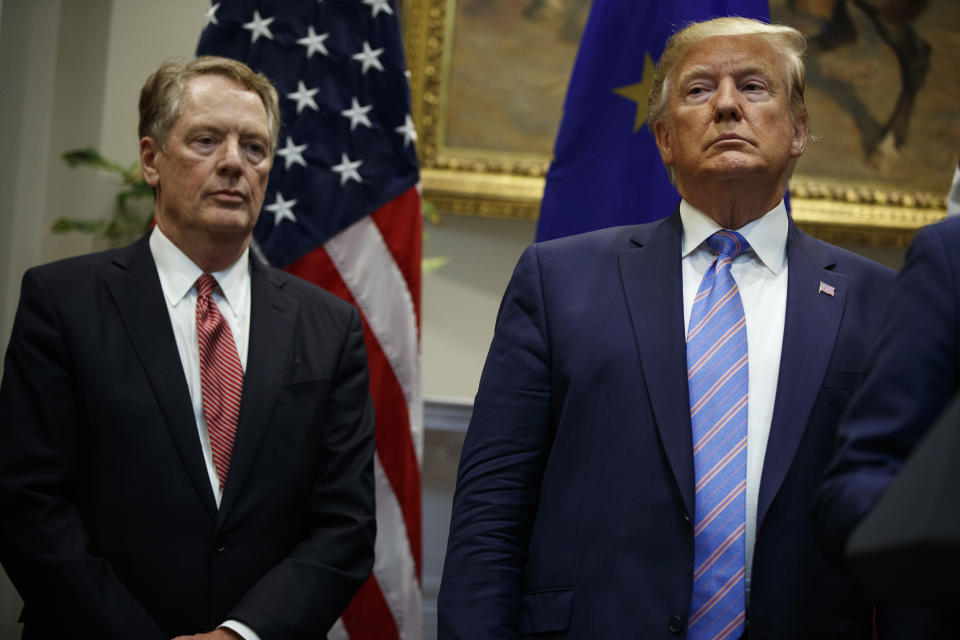Trump rethinks tariffs
Tariff Man is having an identity crisis.
President Trump announced a limited trade deal with China on Dec. 13, including a partial rollback of some of the tariffs Trump imposed on Chinese imports this year.
On Sept. 1, Trump imposed a 15% tariff on about $112 billion worth of Chinese imports. That tariff will drop to 7.5% when the new deal goes into effect early in 2020. Last year, Trump slapped a 25% tariff on $250 billion worth of Chinese imports. Those tariffs remain in place.
All told, Trump is cutting the tariff burden on Chinese imports by about 11%. Trump also agreed not to roll out a new set of tariffs on another $160 billion in Chinese imports he had scheduled for Dec. 15. That’s good news, but the average tariff on Chinese imports is still 15.5%, according to Oxford Economics—double what it was at the start of 2019.
The agreement, should it fully materialize, is not the “very large phase one deal” deal Trump claimed it to be. China will supposedly ramp up purchases of U.S. farm products and make unspecified structural reforms Trump has been demanding. But the toughest issues, such as China’s technology theft and government subsidies for big state-backed companies, will be left for “phase two” discussions we’ll be hearing a lot about in 2020.

“What we have is a bit of good news,” economist Mary Lovely of the Peterson Institute for International Economics told reporters on Dec. 13. “I don’t think anybody thinks this is the end of the story. They didn’t move the needle very much.”
In a way, the “phase one” agreement is a bare-minimum deal each side needed for its own reasons. China needs American pork and soybeans, due to shortages, and its slowing economy could use a boost. Trump averted a tariff hike that would have directly hurt U.S. consumers and thereby his reelection odds. The Dec. 15 tariffs would have raised the cost of laptops, smartphones, and many other high-end consumer goods at a time when the U.S. economy is looking a bit shaky, too.
The phase-one “deal” still leaves in place tariffs that will suck about $73 billion per year out of the U.S. economy, according to the American Action Forum. Maybe that’s why the stock market rendered a split decision on the deal. The S&P 500 rose smartly on Dec. 12, when Trump hinted that a deal was imminent. But it flatlined after negotiators revealed the details the next day.
The best news may be that Trump cannot afford to escalate the trade war any further, politically. U.S. farm exports to China have fallen from $18 billion before the trade war to $7 billion now. Oil and gas exports have dropped from $10 billion to $3 billion. Those lost sales hurt real Americans, and Trump will need their votes next November. The U.S.-China dispute may now become a cold war in which no shots are fired, but peace remains elusive.
Rick Newman is the author of four books, including “Rebounders: How Winners Pivot from Setback to Success.” Follow him on Twitter: @rickjnewman. Confidential tip line: rickjnewman@yahoo.com. Encrypted communication available. Click here to get Rick’s stories by email.
Read more:
Read the latest financial and business news from Yahoo Finance
Follow Yahoo Finance on Twitter, Facebook, Instagram, Flipboard, SmartNews, LinkedIn, YouTube, and reddit.

 Yahoo Finance
Yahoo Finance 
